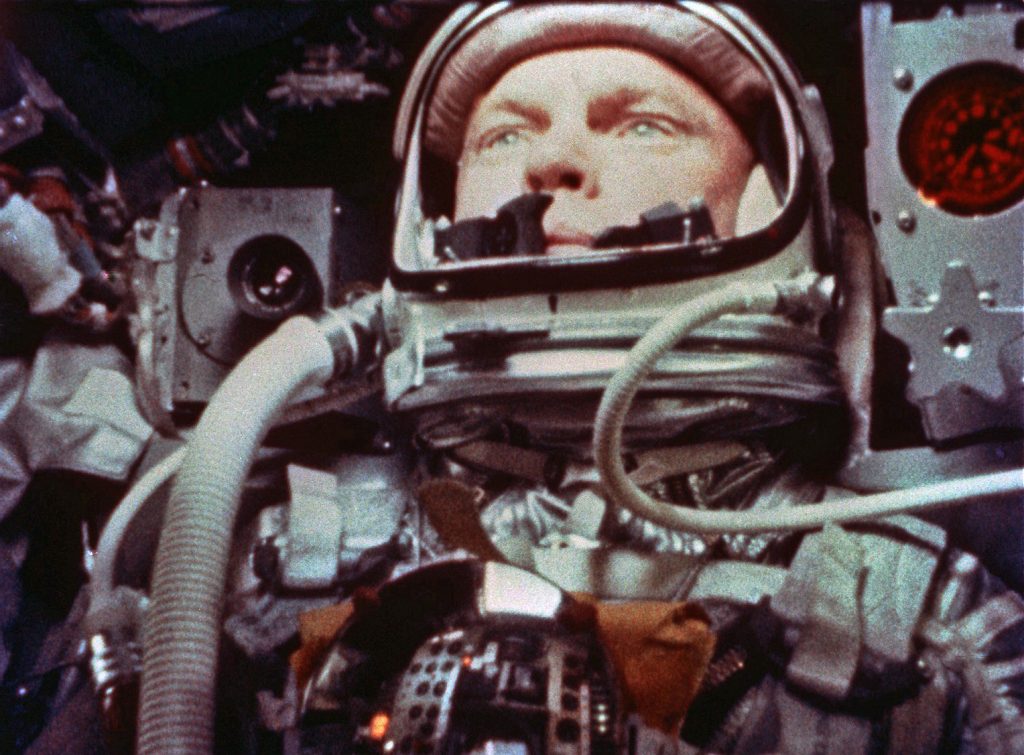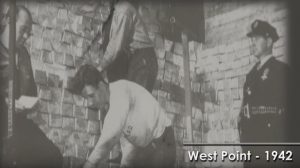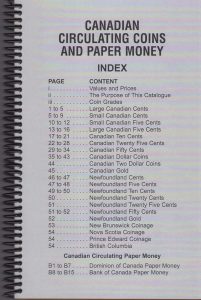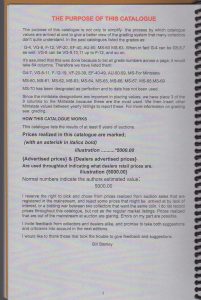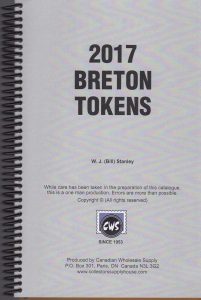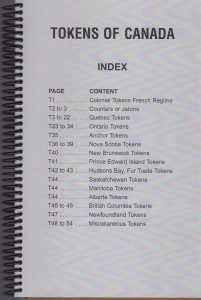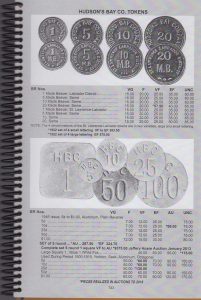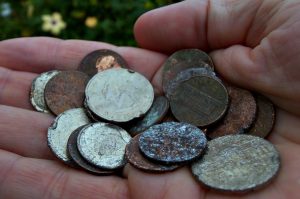May 2021 Numismatic Legislation Review
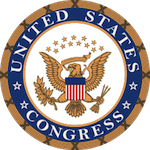 Congress became quiet on the numismatic front in May. After a flurry of vanity bills introduced in March and April, the only bill to be introduced in May was to create a commemorative to raise money for the National World War II Memorial in Washington, D.C.
Congress became quiet on the numismatic front in May. After a flurry of vanity bills introduced in March and April, the only bill to be introduced in May was to create a commemorative to raise money for the National World War II Memorial in Washington, D.C.
The National World War II Memorial opened in 2004 to a lot of acclaim for its design. Surrounding a reflecting pool are 56 granite pillars arranged in a semicircle. Each pillar has the name of the 48 states and eight territories at the time of the war. Two sides represent the two theaters of the war, the Atlantic and Pacific.
On either side of the pool are victory arches to celebrate the victories in Europe and the Pacific. Hidden within the design are two “Kilroy was here” engravings. The phrase’s origin remains a mystery, but it was prevalent where ever U.S. troops were located.The memorial is open 24 hours a day, and the National Parks Service does not charge admission fees to enter. The only money the NPS receives to maintain the memorial is from the budget process and donations. Neither is enough to prevent the deterioration caused by Washington weather extremes and the wear of visitors. Unfortunately, there has also been vandalism.
Because of the condition problems, groups are looking for ways to raise money to refurbish and improve the memorial. Ideas included the creation of a commemorative coin to help raise money for the construction. If passed, S. 1596 will create a commemorative coin series to raise construction money for the memorial.
S. 1596: A bill to require the Secretary of the Treasury to mint coins in commemoration of the National World War II Memorial in Washington, DC, and for other purposes.
Godspeed, John Glenn
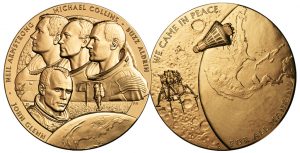
New Frontier Bronze Medal features the portraits of Apollo 11 astronauts Neil A. Armstrong, Michael Collins, and Edwin E. “Buzz” Aldrin Jr. facing left, and Friendship 7 astronaut John Herschel Glenn Jr. facing right. The reverse features the Apollo 11 LEM orbiting the moon and the Friendship 7 mission capsule orbiting Earth.
Heroism is climbing to the top of the Atlas LV-3B rocket, that was rushed to completion and whose tests did not exactly go as planned and launched into low Earth orbit trying to help the United States catch up in the space race. With the entire world watching and the next year after the Soviets made their own flight into orbit, John Herschel Glenn, Jr. rode Friendship 7 into history.
COL Glenn had nothing to prove before being launched into space. He dropped out of college to enlist in the Army Air Corps in 1943 only to transfer to the Navy in 1944 in order to be a pilot. Glenn then flew for the Navy in World War II and Korea. After the Korean War, Glenn was stationed at the Patuxent Naval Air Station in southern Maryland to become a test pilot. Among his accomplishments was being the first pilot to break the sound barrier on a transcontinental flight and earning the Distinguished Flying Cross. But that was not enough for COL Glenn, he applied for the space program.Glenn was so humble that he said that he was the just the next one up. But subsequent stories came out later that with the push to have an American fly in Earth’s orbit quickly, the schedule was manipulated so that Glenn was the pilot of that mission. Some have accused Glenn of using his relationship with President Kennedy for that honor, but that was later disproven.
It was his friendship with Kennedy that prevented Glenn from flying again. Kennedy was so afraid that this hero and friend would be killed, he ordered NASA to ground Glenn forever. When Glenn flew on Discovery (STS-95) in 1998, President Bill Clinton had to rescind Kennedy’s order that kept Glenn grounded. John Glenn was 77 when he went to space on Discovery becoming the oldest person in space.In between flights into space, Glenn became a corporate executive with Royal Crown Cola with an eye on politics. He started with an attempted run at the senate in 1964 but withdrew after a personal accident. He was with Robert F. Kennedy on the campaign trail when Kennedy was assassinated. In 1970 lost the Democratic primary for the senate against Howard Metzenbaum. Glenn finally won the 1974 Democratic primary and was elected Senator from Ohio, a seat he held until retiring in 1999.
Along the way, Glenn was considered to be a candidate for vice president and even ran for president in 1984 before dropping out of the primary.From the day he dropped out of college to join the Army through the end, John Glenn has been nothing less than a hero. He spent most of this life in service to his country with impeccable honor and distinction. Glenn showed how good people can serve for the sake of service without having to get anything more out of the service than the satisfaction that he made life better.
We are better for having had John Herschel Glenn, Jr. amongst us.
- Image of the New Frontier Bronze Medal courtesy of the U.S. Mint.
- All other images are from government sources and in the public domain.
West Point Gold
Gold stored at West Point is called “working stock.” This is the gold that the U.S. Mint uses for striking coins. Depending on the demand, the gold you will see in the video will not be there in a year. It will be used for American Gold Eagles, gold commemoratives, and gold medals cast for congress and the president.
West Point has been called “The Fort Knox of Silver” because it is where the U.S. silver reserve is located. It is also the location for the working stock of silver used by the U.S. Mint. All of the U.S. Mint facilities have working stock of silver used to strike silver coinage. However, since most gold production is struck out of West Point and Philadelphia, most of the working stock of gold is in those facilities.
West Point is the primary manufacturer of gold bullion coins.
In the video at the 50-second mark, someone is weighing a bar of gold. He says the manufacturer claim is that it weighs 400.100 (troy ounces) but actually weighs 400.096. A gold bar weighing 400.096 troy ounces is 12.444 kilograms or 27.435 pounds. With the price of gold currently $1,176.60 per troy ounce (as this is being written), the melt value of that gold bar, which is .9999 fine looking at the stamp on the bar, is $470,752.95.
House passes Apollo 11 commem bill
Apollo 11 has to be one of the top defining events of the 20th century. It captured the imagination of not only the United States but the world in a way nothing else could. Landing on the moon and having the Neil Armstrong, Buzz Aldrin, and Michael Collins safely return to earth using the technology of the day was a feat beyond imagination. And getting there before the blasted Soviets after they beat us into space for quite a number of years was also a big deal during the Cold War.
Now that the bill has passed, it is formally enrolled and signed by the Speaker of the House. It is sent to the Senate for their consideration. Hopefully, Majority Leader Mitch McConnell (R-KY) will put it on the schedule and get this passed without issue.
In case you forgot, here is what the bill requires for the Apollo 11 commemorative coins:
- Commemorative program issued in 2019
- Required design elements:
- Convex in shape “to more closely resemble the faceplate of the astronaut’s helmet of the time”
- “The Secretary shall hold a juried, compensated competition to determine the design of the common obverse of the coins minted under this Act, with such design being emblematic of the United States space program leading up to the first manned Moon landing.”
- Winning designer to receive no less than $5,000 for their design.
- Common reverse design “shall be a representation of a close-up of the famous ‘Buzz Aldrin on the Moon’ photograph taken July 20, 1969, showing just the visor and part of the helmet of astronaut Edwin ‘Buzz’ Aldrin, in which the visor reflects the image of the United States flag, astronaut Neil Armstrong, and the lunar lander.”
- Mintage Limit: 50,000 $5 gold; 400,000 silver dollars; 750,000 clad half-dollar; 100,000 five-ounce silver proof dollars
- Surcharges of $35 per $5 gold; $10 per silver dollar; $5 per half-dollar; and $50 per five-ounce bullion.
- Payouts: 50-percent to Smithsonian Institution’s National Air and Space Museum’s “Destination Moon” exhibit; 25-percent to the Astronauts Memorial Foundation; and 25-percent to the Astronaut Scholarship Foundation.
I am saving my pennies. I want a complete set!
REVIEW: 2017 Canadian Circulating Coins, Tokens & Paper Money
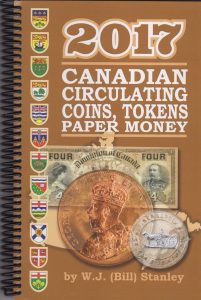 If you are a collector of Canadian coins and looking for a standard reference, there is nothing better than The Charlton Standard Catalogue of Canadian Coins. Available in two volumes, the Charlton catalogs would be the Canadian equivalent of the Red Book Professional Edition. Charlton Press also publishes books for the Canadian currency and token collectors. All of the Charlton books are very comprehensive on their respective topic and a must for the Canadian collector.
If you are a collector of Canadian coins and looking for a standard reference, there is nothing better than The Charlton Standard Catalogue of Canadian Coins. Available in two volumes, the Charlton catalogs would be the Canadian equivalent of the Red Book Professional Edition. Charlton Press also publishes books for the Canadian currency and token collectors. All of the Charlton books are very comprehensive on their respective topic and a must for the Canadian collector.
Like the Professional Edition of the Red Book, the Charlton Catalog is not a quick or portable reference. When I am searching through coins at shows or if I am just trying to identify something I had just acquired, I want a quicker reference with some basic prices that does not require me to hunt around the other information I am not interested in at the moment. I think I found the perfect reference for Canadian numismatics.
While searching one of my favorite online coin supply retailers, I came across the 2017 by W.J. (Bill) Stanley. It is published by Canadian Wholesale Supply of Paris, Ontario. Within the book, it does not carry a copyright date and it does not have an International Standard Book Number (ISBN). It can be found at a number of online numismatic stores but not on stores like Amazon that require an ISBN.
But if you are collecting Canadian Coins, Breton Tokens, or Canadian Paper money you should have a copy of this book sitting next to your Charlton Standard Catalog. While the Charlton books are very complete with a lot of information, the pictures are in black and white. All of the coin images in the Stanley book are in color. Although you can guess what the colors are, seeing the color images on varieties and being able to compare them with coins is of great help.
- Index of the Coin and Currency Section
- Bill Stanley’s purpose of this book
- Sample of the Vicki Cents
- Sample page showing how varieties are illustrated
Another advantage of the Stanley book is that it consists only of circulating coinage. Although the Royal Canadian Mint has expanded its catalog of non-circulating legal tender coins over the last decade, if you are just collecting circulating issues, then the other stuff is clutter. It is just the basics of what was circulated in Canada.
This book is divided into three section. The first are circulating Canadian coins, the second for Canadian currency, and final are the tokens. The coin and currency section has a single introduction, guide to reading the tables, and an index to find the particular type you might try to find. The coin section has their pages numbered beginning with page 1 with the introductory parts numbered with Roman numerals. But the currency section begins on page B-1 following page 54 of the coins.
- Beginning of the currency section
- A sample page of the currency section
The tokens section appears as if it was a separate book bound with the coin and currency section to make one book. It has a title page followed by a similar introduction, guide to reading the information, and an index. The introductory pages are not numbered but the token listings begin on page T-1.
- Title page of the Breton Tokens section
- Index to the Breton Tokens section
- A sample from the Breton Tokens section
- A sample from the Breton Tokens section
If the book was bigger, these page numbering anomalies would be confusing. I only noticed this when I tried to figure out how many pages are in the book. Considering that not every page is numbered and there are some blank pages in the middle, I think there are 132 pages in total. Not very thick and spiral bound for easier handling.
Prices in the book are given for the basic grades and includes prices for significant auctions and prices gathered for rare and significant coins. As most of us are aware, most printed price books are obsolete by the time they are published. What Stanley does is use information he gathers from auctions and coin shows around Canada to determine the prices. In his introduction, Stanley admits he uses his judgment to exclude what appears to be bogus data based on bidding wars or data from untrustworthy sources. He also admits that there may be errors.
Without reaching out to Stanley, it appears he is the sole responsible person for the prices and content of this guide. Maybe that is a good thing considering the inaccuracy of similar guides from other publishers. However, after go through his guide and a number of other sources including the prices from a few Canadian dealers, this book may be more accurate than his caveat suggests.
After that, it is pages of coin listings similar to any price guide you may find. The number of coins minted is included on each line. There are images of coins, images of varieties with an arrow point to subtle differences, and prices in the most relevant grades of circulating coins.
I cannot speak about the Charlton Standard Catalog of Canadian Currency since I do not own that book, but similar to the coins’ section, the Canadian currency section is nothing but the basics. Color images are reproduced from the Bank of Canada and have “SPECIMEN” superimposed on each note. Descriptions note signature, portrait, and serial number differences (i.e., prefix types) for the notes and the prices in the most relevant grades.
Tokens are a very important part of the history of Canadian money. When coins or currency was not available, Canadian towns and provinces created tokens to act in the place of money. The history of Canadian tokens is fascinating and worth another report. It is important to note that the cataloging of tokens is based on the work Pierre Napoleon Breton in his book Illustrated History of Coins and Tokens Related to Canada originally published in 1894, since republished and updated. As part of his cataloging of tokens, he assigned them a number that is now known as Breton Numbers. Stanley lists Canadian tokens by Breton Numbers.
Although I am not a collector of Breton Tokens, I am fascinated by other areas of numismatics especially if they are different. What thrills me about this section is that the tokens are imaged side-by-side with their basic information and prices. It is not a tome on their history but if I was a collector, it would help me identify these tokens and what I might expect to pay for them. I found myself flipping through the pages looking at the tokens, what they say, and thinking about their possible history. I want to go back through my back issues of The CN Journal (publication of the Royal Canadian Numismatic Association) and find some of those stories about tokens I never read.
Flipping the pages of such as basic reference, I never thought I would learn so much. I think it is because all of the other information has been omitted, I can see the coins, images of the varieties, and the prices without distraction. Now that I have learned a number of things, I can pick up other references to learn more.
My only minor nit about this book is the page numbering scheme and the lack of coherent index or table of contents. I give it a grade of MS-68 for being a simple reference of circulating Canadian numismatics and a book that I recommend.
Page images are licensed under Creative Commons Attribution-NonCommercial-ShareAlike 4.0 International License.
What is the Mint doing with the Mutilated Coin Redemption Program
The mutilated coin redemption industry is a multi-million dollar business. Most of the businesses involved with this industry are recyclers that find coins in cars and machines that are recycled. Recycling these metals require the use of heavy machinery that takes apart the items and compresses them to transport to processors. Six compressed cars can take up the same amount of space as one full-size car. More can fit in the same space if the metal is shredded.
Although some of the coins are removed from the cars, others end up in the machinery. After processing through high pressure and high heat, the found coins are in no condition to be sent to banks for redemption. Most of the time, these coins are cut, bent, or badly scorched making them impossible to process using normal coin counting mechanisms. According to an industry representative, recyclers can find an average of over $2 per car and over $10 in coin-operated machines as they are taken apart and crushed.
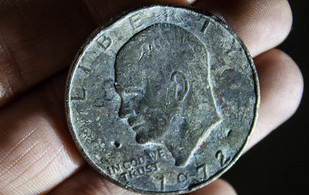 Coin-operated machines are not as well made as people suspect. For every time you might have had a coin “stuck” and lost in the machine, the coin might have dropped into an area outside of the coin bin and between internal parts. When the machines are serviced, the coins are usually dumped into bags and taken back to the company to be placed into coin counting machines. In many cases, the count between the expected amount of money and the number of items sold are not exact. This type of “shrinkage” is part of their business risk plans.
Coin-operated machines are not as well made as people suspect. For every time you might have had a coin “stuck” and lost in the machine, the coin might have dropped into an area outside of the coin bin and between internal parts. When the machines are serviced, the coins are usually dumped into bags and taken back to the company to be placed into coin counting machines. In many cases, the count between the expected amount of money and the number of items sold are not exact. This type of “shrinkage” is part of their business risk plans.
When the coin-operated machines are taken out of service, many are cleaned and inspected for loose coins. But the way the machines are designed, it is common that many coins are missed. They will continue to stay within the machine until it is discarded for scrap.
Cars and other machines sometimes gain a second life overseas. Machines are sold as surplus, repaired by their new owners and put into service around the world. These machines end up in the recycle system when they fall beyond the ability to be repaired. International recyclers recover U.S. coins from these cars and coin-operated machines. This is not including the scrap cars that are shipped overseas for recycling. Brokers buy the coins from recyclers and ship them to the United States. Currently, there is an estimated $1 million in mutilated coins being held by Customs and Border Patrol (CBP) while the redemption program is suspended. It is also estimated that more than $50 million in mutilated coins are being stored overseas while shipments are suspended.
As the mutilated coins accumulate, recyclers are now paying for storage and security over and above their regular business expenses. Some have sold their mutilated coins to other recyclers and brokers at a discount to avoid paying the storage costs. Those accumulating these mutilated coins are hedging on the mutilated coin-recycling program being restarted soon.
Brokers handling the import of these coins have filed suit against the CBP for blocking and holding the shipments of mutilated coins. Plaintiffs cite a report from a company called FormerFeds Group, a company made up of former federal lawyers and other senior officials, that said the accusation of importing mutilated coins from China is not true and that the amount of “junk” (non-coins in the batch) are within tolerances of the program. They are requesting that the court grants an order to release the coins and to compel the U.S. Mint to resume the Mutilated Coin Redemption Program.
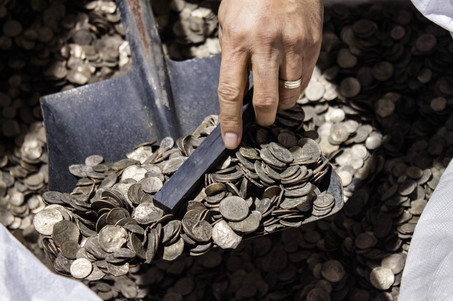
Hong Kong-based Wealthy Max Ltd. publicly opened and sampled 13 tonnes of mutilated U.S. coins waiting for shipment in Hong Kong. The coins come from piles of metal generated by automotive shredders and via incinerated waste streams.
Without fanfare, the U.S. Mint published a request in the Federal Register (81 FR 75922) asking for comments regarding the Mutilated Coin Exchange Program to supplement the information it has already gathered. The notice was published on November 1, 2016, without a follow up from the U.S. Mint press office. The U.S. Mint allowed for a two-week comment period that ended on November 15, 2016.
According to the Federal Register, the “Mint is considering include requiring participant certification, coinage material authentication, chain of custody information, and annual submission limitations.” They were seeking comment on that and other possible factors to better secure the program. There is no indication as to whether this is tied to the case brought by the brokers handling foreign recycling.
Coins make up a very small minority of the amount of scrap in the recycling stream. But with the problems caused by the U.S. Mint’s refusal to properly deal with this issue, it is taking up a lot of time and money both here in the United States and with long time business partners abroad.
- Scrap coin image courtesy of Recycling International.
- Other images courtesy of American Metal Market Daily.





